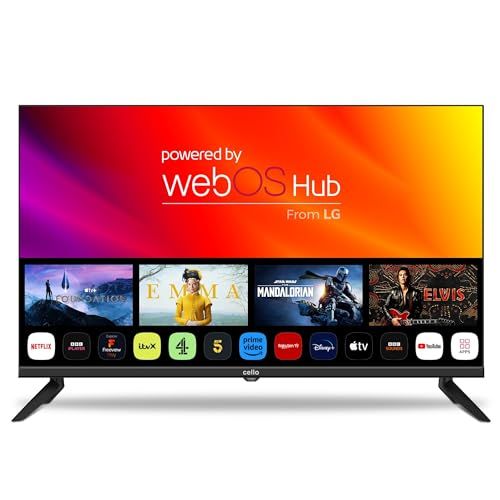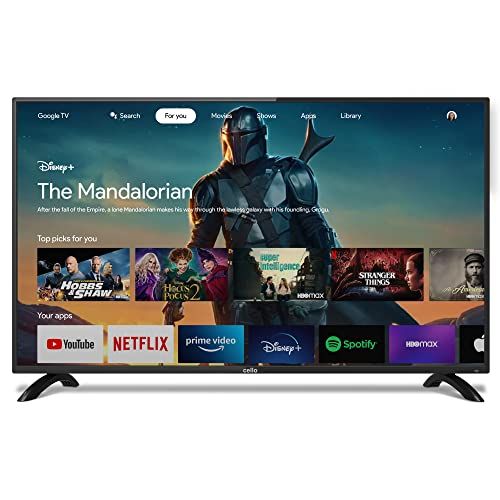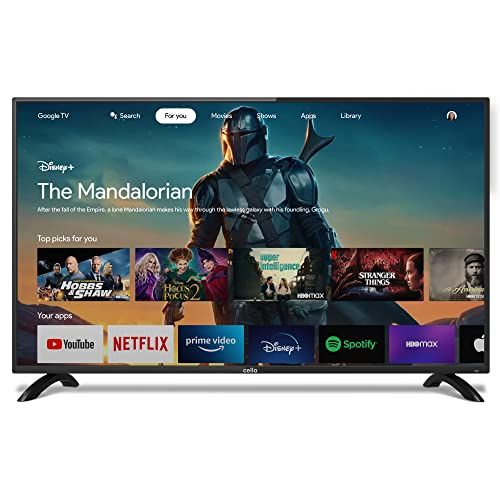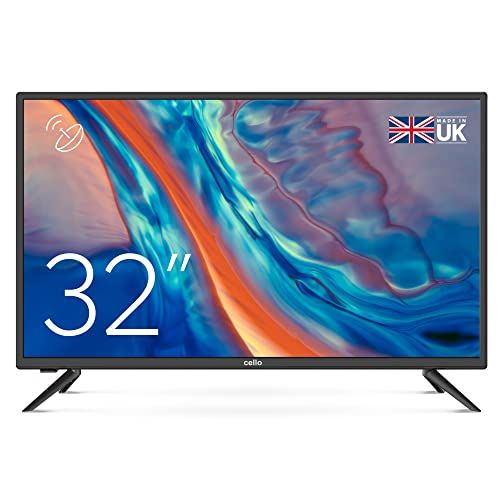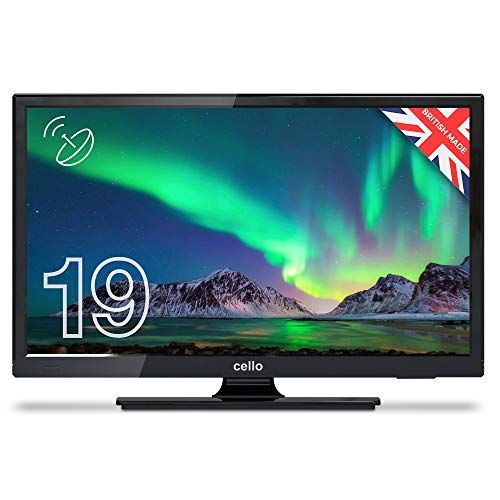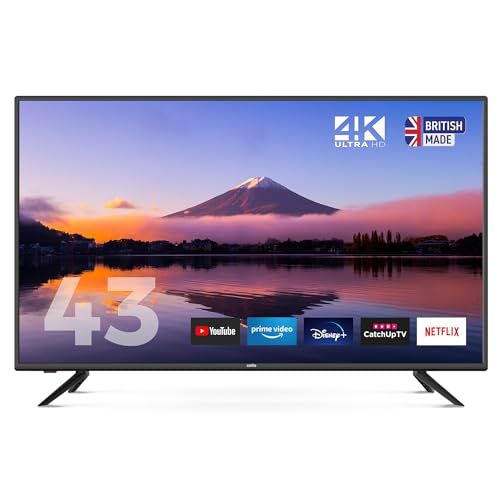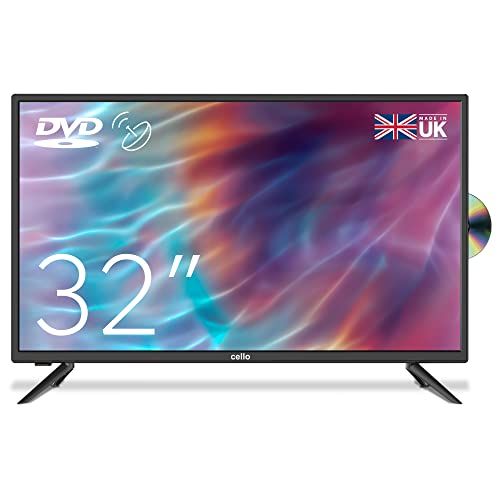Categories
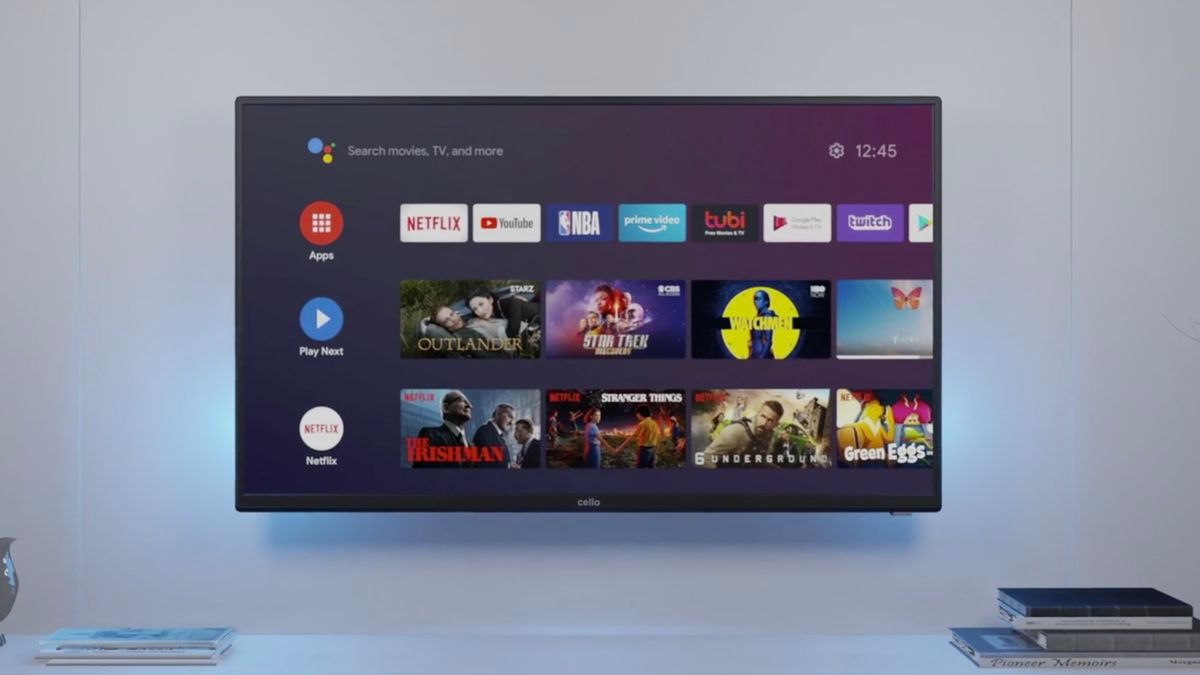
Cello is an Indian consumer electronics company that manufactures televisions, home appliances, personal gadgets and more. Founded in 1967 in New Delhi, Cello has become one of the leading television brands in India with a reputation for affordable pricing and decent quality.
Some of the key features and selling points of Cello TVs include:
Affordable pricing - Cello TVs are very competitively priced, making them accessible to a wide range of consumers. Models start at around £100 for smaller, basic HD TVs.
Decent picture quality - While not matching premium brands, Cello TVs offer good HD resolution and color reproduction for the price. They use standard display panels from major manufacturers.
Smart TV capabilities - Many Cello TVs come with built-in WiFi and pre-loaded apps like Netflix, YouTube, Prime Video and more. This adds streaming functionality.
Wide range of screen sizes - Cello offers TV sizes from 24-inches up to 65-inches to suit different budgets and room sizes.
Energy efficiency - Their TVs meet energy efficiency standards and have eco-friendly technology to reduce power consumption.
Warranties - Cello TVs come with at least a 1-year warranty. Some models have extended 2 to 3 year coverage.
Display Technology
Cello TVs use LED display technology for their screens. This means they have an LCD (liquid crystal display) panel that is backlit by LED (light emitting diode) lights. The LED backlighting provides even lighting across the screen and allows for thinner display designs compared to traditional CCFL backlights.
Most Cello TVs utilize direct LED backlighting, where the LEDs are placed directly behind the screen. This allows for more precise control of the backlight and better dimming capabilities. Higher-end Cello models feature full-array local dimming, which has LED zones that can dim individually for increased contrast and deeper blacks.
Some Cello TVs also incorporate quantum dot technology in the LCD panel. Quantum dots produce purer colors and enhance color volume. When combined with the high peak brightness of LED backlights, this helps Cello TVs produce a wide color gamut for vivid, accurate colors.
OLED displays, which use self-emitting pixels and don't require a backlight, are currently only found on Cello's premium TV models. OLED enables perfect black levels and infinite contrast since pixels can turn off completely. Cello's OLED TVs also support HDR for outstanding picture quality.
Overall, Cello utilizes high-quality display technologies like direct LED backlights, quantum dots, and OLED to deliver excellent image performance across its lineup. The choice of display type impacts factors like contrast, viewing angles, brightness, and more.
Picture Quality
Cello TVs offer excellent picture quality that rivals more expensive brands. They feature high-resolution 4K panels that display over 8 million pixels for crisp, detailed images. Even on large screen sizes, you'll enjoy sharp definition with no visible pixilation.
The top models support advanced HDR formats like Dolby Vision and HDR10+ for expanded contrast and vivid colors. With high dynamic range, blacks appear deeper and highlights seem brighter. This adds realism to the picture. You'll notice the difference in nature scenes with bright skies and shadows.
Most Cello TVs deliver high contrast ratios over 5000:1 for inky blacks right next to bright whites. This makes images pop off the screen with depth and dimension. The local dimming technology further improves contrast by individually optimizing the backlight across zones.
In terms of color performance, Cello TVs produce rich, accurate colors covering over 90% of the DCI-P3 color space. This allows the TV to showcase the full spectrum that movies and shows contain. You'll see nuanced shades and hues for realistic images. The top models even support wide color gamut for over a billion colors.
Overall, Cello TVs provide an immersive viewing experience with sharp 4K resolution, expanded HDR contrast, and vibrant wide colors. Whether you're streaming a movie or watching sports, the picture will impress you with its clarity and realism across various content.
Smart TV Features
Cello TVs come with an intuitive and user-friendly smart TV interface. They use the company's own operating system called Cello OS which provides smooth navigation and quick access to apps.
The Cello OS supports popular apps like Netflix, YouTube, Disney+ and more. It has its own app store where you can download additional apps convenient to your needs. With built-in Chromecast and Airplay support, you can easily cast content from your mobile device to the Cello TV.
Cello TVs come with voice control features through the remote. You can use your voice to search for content, change settings, open apps and more. The voice recognition works quite well for basic commands. The TVs also support Google Assistant and Amazon Alexa so you can control certain functions through external smart speakers or devices.
Overall, Cello TVs provide a solid smart TV experience with an easy to use interface, good app support and helpful voice control capabilities. The system is intuitive and makes it simple to access entertainment options.
Sound Quality
The sound quality on Cello TVs is excellent, offering an immersive audio experience. Cello uses high-quality speaker drivers and advanced audio processing technology to deliver crisp, clear sound with good bass response.
The speaker configuration varies depending on the model. Entry-level Cello TVs have 20W downward-firing speakers, while mid-range models have 30W speakers with greater power and full-range sound. High-end Cello TVs feature powerful 40W speakers and add side-firing speakers for wider sound dispersion. Some models also include a dedicated center channel speaker for clear dialogue.
For the best possible audio, Cello partners with leading sound brands like Dolby and DTS. Their TVs support advanced surround sound formats like Dolby Atmos and DTS:X for lifelike, multi-dimensional sound. With Dolby Atmos, sound effects can move all around you in a 3D space. DTS:X also creates immersive audio with object-based sound that follows the action on screen.
In addition, many Cello TVs have audio tuning modes to optimize the sound for different content like movies, sports, or music. There are also equalizer settings and volume leveling features for full customization and the best listening experience.
Overall, Cello TVs deliver impressive sound quality to match their excellent picture. The powerful speakers, surround sound support, and audio enhancements result in an engaging, cinematic audio performance.
Design
Cello TVs have a very sleek and minimalist design, featuring thin bezels and a sturdy yet stylish stand.
Bezel
The bezels on Cello TVs are extremely thin, usually just a few millimeters wide. This creates a nearly seamless viewing experience and allows the image to take center stage. Even on the lower-priced models, Cello keeps the bezels small and tasteful.
Stand
Most Cello TVs come with a metal stand in either black or silver finish. The stands have a wide, flat base to keep the TV stable, along with a slim upright piece to hold the set in place. The stand is attractive yet understated, complementing most decor. Some very large Cello models use two feet instead of a stand.
Wall Mount
Cello TVs are designed to be easily wall mounted, with standardized VESA mounting holes on the back panel. The sets are fairly slim in depth, especially the higher-end OLED and QLED models. This allows them to hug the wall for a streamlined, built-in look when wall mounted. Most models also include cable management features to keep cords organized and out of sight.
Ports and Connectivity
Cello TVs come with a variety of ports and connectivity options to suit different needs.
HDMI - Cello TVs have multiple HDMI ports, usually 3-4 on smaller models and up to 6 on larger models. HDMI allows you to connect devices like Blu-ray players, gaming consoles, streaming sticks etc. The latest models have HDMI 2.1 ports that support higher resolutions and refresh rates.
USB - There are 2-3 USB ports to connect devices like hard drives, keyboards etc. The USB ports are USB 2.0 and USB 3.0 for fast data transfer.
Ethernet - For a wired internet connection, Cello TVs have an RJ45 ethernet port. This provides more stable connectivity compared to WiFi, especially for 4K streaming and gaming.
WiFi - For wireless connectivity, the TV has built-in WiFi supporting the latest standards such as 802.11ac. It allows you to connect to the internet and use smart features without any wires.
Bluetooth - Cello TVs also have Bluetooth support to connect wireless speakers, headphones and other audio devices.
The wide range of connectivity options makes it easy to connect the Cello TV with various kinds of media devices, game consoles, streaming boxes and home entertainment systems.
Remote Control
The Cello TV remote controls are designed to be simple and intuitive to use. They have all the necessary buttons without being cluttered.
The most frequently used buttons like power, volume, channel change, and input selection are grouped together for easy access. The number buttons for direct channel selection are also prominently placed.
Cello TV remotes have dedicated buttons for popular streaming apps like Netflix, YouTube, and Prime Video. This allows quick launching of these apps.
Voice control is also enabled on Cello TV remotes. You can press the microphone button and speak your commands to control various functions like searching for content, changing settings, etc. This hands-free operation is convenient.
A useful feature is the finding remote function. If you misplace the Cello remote, you can make the TV emit a sound to help locate it. This will save you time hunting for the remote around the house.
Overall, the Cello TV remotes strike a good balance between simplicity and having adequate controls at your fingertips. The important functions are readily accessible without cluttering the remote with too many buttons.
Models and Sizes
Cello offers a wide range of TV models across various size classes to suit different needs and spaces.
The main model lines are:
C Series - Cello's entry level 4K TVs, available in 43", 50", 55", 65", 75" screen sizes. Provides decent picture quality and smart features at an affordable price point.
E Series - Mid-range 4K models with enhanced display specs like increased brightness and wider viewing angles. Available in 55", 65", 75" sizes. Adds more premium styling too.
P Series - High-end 4K TVs with Cello's best display technology, featuring advanced local dimming for deep blacks. Comes in 65", 75", 85" options only. Built for home cinema setups.
X Series - Cello's flagship 8K TVs with the highest resolution and largest screen sizes of 98" and 110" available. Cutting-edge intelligent upscaling allows lower resolution content to be near 8K quality. The ultimate TV for an immersive viewing experience.
No matter your budget or room size, Cello likely offers a TV model to meet your needs. The range covers small to extra large screen sizes so you can find your perfect fit.
Conclusion
Cello TVs offer a solid mix of features, performance, and value. The picture quality is quite good for the price, with decent color accuracy, contrast, and 4K resolution on higher-end models. They also include popular smart TV capabilities like built-in streaming apps and voice control.
On the downside, the sound quality is just average and may require an external soundbar for an immersive experience. The smart TV interface can also be a bit sluggish at times. Build quality is decent but not premium.
Overall, Cello TVs are a good option for budget-conscious shoppers looking for a balance of picture quality, smart features, and affordable pricing. They provide good bang for your buck, especially for casual TV watching and streaming. More discerning videophiles may want to opt for higher-end brands that offer better performance and build quality. But for most mainstream consumers, Cello delivers solid performance and value.
Cello TV comparison
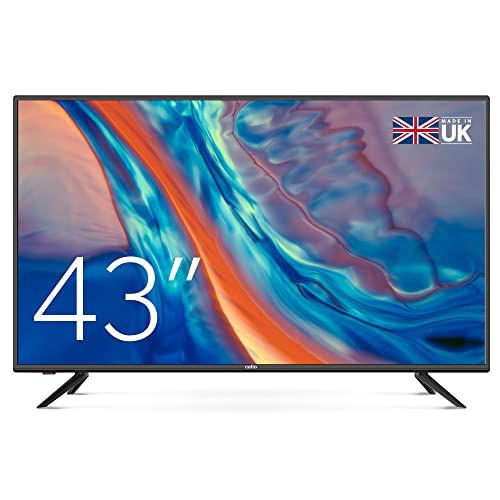 | 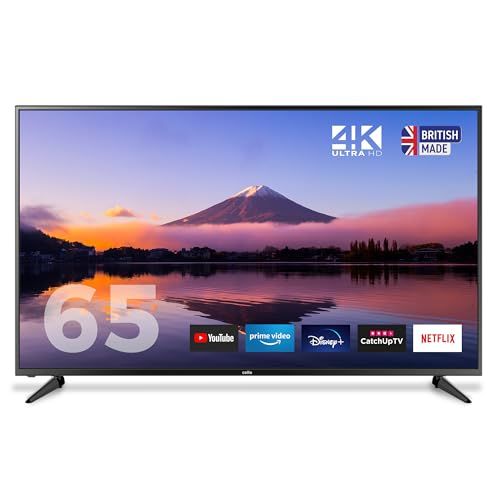 | 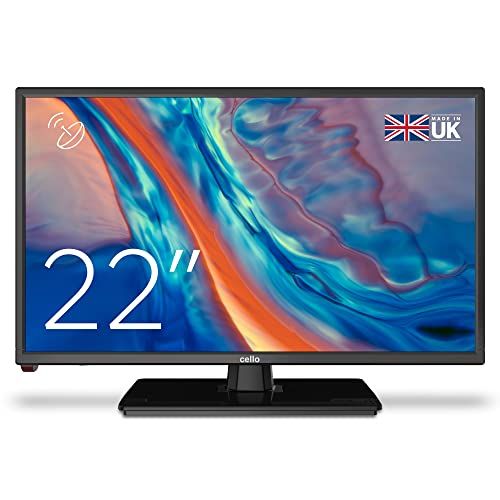 | 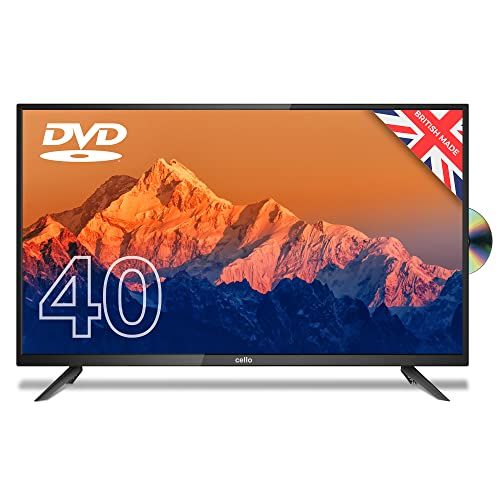 | 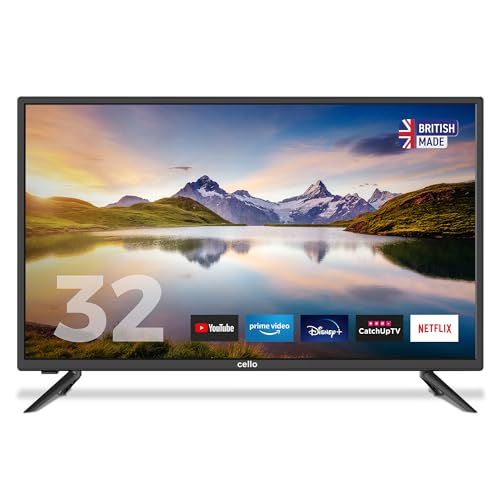 | |
|---|---|---|---|---|---|
| Model | Cello ZBVD0234: 43 Inch | Cello C65RTS: 65 Inch | Cello Z0222: 22 Inch | Cello Y22ZF0204: 40 Inch | Cello C32RTS: 32 Inch |
| Model Name | C4320DVB/ZBVD023 | C65RTS | C2220S | 40 inch LED TV | C32RTS |
| Manufacturer | Cello Electronics | Cello | Cello | Cello | Cello |
| Display Technology | LED | LED | LED | LED | LED |
| Included Components | Mains Cable Remote control | Mains Cable, Remote Control | Mains Cable, remote control | Power Cable, Remote Control, Stand | Power Cable, Remote Control, Stand |
| Refresh Rate | 60 Hz | 60 Hz | 60 Hz | 60 Hz | 60 Hz |
| Resolution | 1080p | 4K Ultra HD | 1080p | 1080p | 720p |
| Screen Size | 43 Inches | 65 Inches | 22 Inches | 40 Inches | 32 Inches |
| Special Feature | LED | 4K Ultra HD | Full hd | Flat, USB Recording (DVR) | Browser |
| Supported Internet Services | Free View | Netflix, Amazon Instant Video, YouTube, Browser | Free View | Netflix, Free View | Netflix, Amazon Instant Video, YouTube |
| Item Model Number | C4320DVB/ZBVD023 | C65RTS | C2220S | Y22ZF0204 | C32RTS |
FAQ
What is the best beginner cello to buy?
For beginners, we recommend starting with an affordable, full-size, solid wood cello outfit. The Cecilio CCO-100 is a great starter cello under £200 that comes with a bow, case, rosin, and extra strings. The Cremona SC-80 is another good option under £300. Avoid very cheap cellos that may be difficult to play in tune. Invest in a quality instrument that will last.
What size cello do I need as an adult?
Most adult cellists play full-size 4/4 cellos. A full size cello is generally suitable for anyone taller than 150 cm. Shorter beginners may start on 3/4 size, but will need a 4/4 cello as they grow. Never buy a cello without trying it first, as proportions matter more than height. Sit with the cello between your legs - your knees should bend slightly outward around the lower bouts.
How much does a cello cost for a beginner?
Beginner cellos cost £100 to £500. We recommend budgeting £200-300 for your first cello outfit including bow, case, and accessories. Very cheap cellos under £100 often have quality issues. Invest in the best instrument you can afford from a reputable brand. Higher quality materials and workmanship will make it easier to learn and sound good.
What is the best cello brand for beginners?
Good beginner cello brands include Cecilio, Cremona, Merano, Stentor, and Yamaha. These offer quality cellos and outfits for students at affordable prices. Always try before you buy. Sound and feel are most important - not just the brand name. Consider buying from a specialist string shop for professional set up.
How often should I replace my cello strings?
With regular playing, cello strings will last 3-6 months before needing replacement. Signs it's time to change strings include lack of resonance, dull/muddy tones, and difficulty staying in tune. Start with an extra set in your case. Have a luthier show you how to change them properly. Quality strings matter - try D'Addario Helicore or Prelude.
What accessories do I need to play the cello?
Essential cello accessories include rosin to prepare the bow, a music stand, and an adjustable endpin stop. Also useful are rockstops to hold the cello safely, humidifiers, a tuner, metronome, and extra strings. Down the road you may add items like an endpin anchor, portable stand, or pickup. Quality gear protects your cello and makes playing easier.
How can I find cello lessons near me?
Search for cello teachers through local music schools, orchestras, colleges, or online directories. Look for instructors with experience teaching beginners - not just performance degrees. Ask about lesson approaches and rates. You want a supportive teacher to get you started with posture, technique, music reading, and motivation to practice. Private and group classes are both good options.
How long does it take to learn the cello?
With regular practice, you can reach basic cello proficiency within 6-12 months. But mastery of cello technique takes years of dedicated work. Set small goals each week, focus on quality practice, and be patient with yourself as skills develop. Lifelong learning is part of playing any instrument - always push yourself to improve. Playing cello is very rewarding if you stick with it!
What music can I play as a beginner cellist?
Great beginner cello music includes folk songs like Danny Boy, pop melodies by Adele or Ed Sheeran, movie and TV themes, and classical selections by Bach, Beethoven, and Vivaldi. Work with your teacher to find pieces you enjoy in a variety of styles. Focus on developing excellent tone and pitch on easier pieces before tackling advanced repertoire. Have fun exploring new music!
How can I find others to play cello with?
Playing music with others accelerates learning. Seek out cello duets, trios, quartets, or look for a local amateur orchestra to join. Community music schools, universities, and youth orchestras often have programmes for adult learners. Playing alongside more advanced musicians inspires you to improve. Make music with cello friends for encouragement, motivation, and joy!
